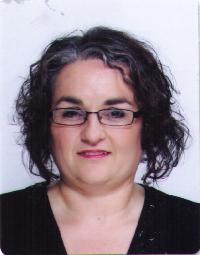How do I add the German Umlaut? Thread poster: Kim Metzger
|
|---|
I just bought a new PC and have forgotten what I did several years ago with my old computer to be able to type the Umlaut and sz. My MS Word 2002 help section tells me to type ctrl+shift+: and then the letter. When I do this I get capital letters only. Also, it would be lovely to be able to use the old system of alt+132, etc. but when I try that I can only get the ae. Help would be very much appreciated. Kim
| | | |
Maya Jurt 
Switzerland
Local time: 00:20
French to German
+ ...
| Insert Symbol | Feb 23, 2003 |
Go to \"Insert symbol\", choose your type and decide what shortcut is best for you. Remember the old one?
Or, since you are not using Spanish, buy an QWERTZ keyboard. That\'s as easy, bnut you have to get used to it.
| | | |
Kim Metzger 
Mexico
Local time: 16:20
German to English
TOPIC STARTER | Thanks Maya dear | Feb 23, 2003 |
That worked wonderfully, except for the oe. It works fine in MS Word, but when I try to type it on a webpage like this one I get x. Any ideas?
Your old chum, Kim
| | | |
Nina Engberg 
United States
Local time: 16:20
English to Swedish
+ ...
| Change the keyboard in the Control Panel | Feb 23, 2003 |
Kim, if your keyboard is set for German (Standard), the colon button is ö and the quotation mark button is ä. I couldn\'t find the ü but if you press the bracket button and then u, it will work (works for typing ö and ä also). The German keyboard seems identical to the Swedish one. I have gotten so used to where things are on the Swedish keyboard ( the question mark and dask switch places etc.) that it\'s a piece of cake by now. The current language shows in the task bar and I just hit shif... See more Kim, if your keyboard is set for German (Standard), the colon button is ö and the quotation mark button is ä. I couldn\'t find the ü but if you press the bracket button and then u, it will work (works for typing ö and ä also). The German keyboard seems identical to the Swedish one. I have gotten so used to where things are on the Swedish keyboard ( the question mark and dask switch places etc.) that it\'s a piece of cake by now. The current language shows in the task bar and I just hit shift and Alt to juggle between them.
I hope this helps,
Nina
BTW, this works in MS Word, on the web etc.
[ This Message was edited by:on2003-02-23 01:37] ▲ Collapse
| | |
|
|
|
Kim Metzger 
Mexico
Local time: 16:20
German to English
TOPIC STARTER | Muchas gracias, Nina | Feb 23, 2003 |
Using our method I\'m now able to type in the Umlauts on the web. My only concern is that it\'s going to slow Fast Eddy down. But he\'ll just have to learn to live with that.
Thank you both.
| | | |
| Are you using Word XP? | Feb 23, 2003 |
If so, on an English keyboard:
shift + Ctrl + ;
followed by a,u,o as you wish.
There is one for ss but I don\'t know it!
I find that quicker than searching for the \"special characters\"
| | | |
Mats Wiman 
Sweden
Local time: 00:20
Member (2000)
German to Swedish
+ ...
In memoriam | Use ALT+.... instead | Feb 23, 2003 |
ü = ALT+u
Ü = ALT+Shift+u
ä = ALT+a
Ä = ALT+Shift+ä
ö = ALT+o
Ö = ALT+Shift+u
ß = ALT+s
or use this table:
Ç = ALT+128 (fra)
ç = ALT+135 (fra)
é = ALT+130 (fra)
É = ALT+144 (fra)
è = ALT+138 (fra)
È = ALT+212 (fra)
ê = ALT+136 (fra)
Ê = ALT+210 (fra)
ë = ALT+137 (fra)
Ë = ALT+211 (fra)
... See more ü = ALT+u
Ü = ALT+Shift+u
ä = ALT+a
Ä = ALT+Shift+ä
ö = ALT+o
Ö = ALT+Shift+u
ß = ALT+s
or use this table:
Ç = ALT+128 (fra)
ç = ALT+135 (fra)
é = ALT+130 (fra)
É = ALT+144 (fra)
è = ALT+138 (fra)
È = ALT+212 (fra)
ê = ALT+136 (fra)
Ê = ALT+210 (fra)
ë = ALT+137 (fra)
Ë = ALT+211 (fra)
à = ALT+133 (fra)
â = ALT+131 (fra)
î = ALT+140 (fra)
Î = ALT+215 (fra)
ï = ALT+139 (fra)
Ï = ALT+216 (fra)
\" = ALT+174 (fra)
\" = ALT+175 (fra)
ü = ALT+129 (deu)
Ü = ALT+154 (deu)
ß = ALT+225 (deu)
æ = ALT+145 (dk/no)
Æ = ALT+146 (dk/no)
ø = ALT+155 (dk/no)
Ø = ALT+157 (dk/no/sv)
í = ALT+161 (esl)
Í = ALT+214 (esl)
ñ = ALT+164 (esl)
Ñ = ALT+165 (esl)
ó = ALT+162 (esl)
Ó = ALT+224 (esl)
¿ = ALT+168 (esl)
¡ = ALT+173 (esl)
$ = ALT+36
£ = ALT+156
¥ = ALT+190
@ = ALT+64
ð = ALT+208
þ = ALT+231
µ = ALT+230 (=micro-)
± = ALT+241
º = ALT+167
° = ALT+248
² = ALT+253
³ = ALT+252
{ = ALT+123
} = ALT+125
[ = ALT+91
] = ALT+93
\\ = ALT+92
§ = ALT+245
# = ALT+35
1/2= ALT+171
1/4= ALT+172
3/4= ALT+243
(c)= ALT+184
(r)= ALT+169
4-digit characters:
œ = ALT+0156 (fra)
Π= ALT+0140 (fra)
• = ALT+0149 (big bullet)
▲ Collapse
| | | |
Wenke Geddert
United Kingdom
Local time: 23:20
Member (2004)
English to German
+ ...
| German Umlaut | Feb 23, 2003 |
Depending on how often you need to use these, I would suggest three options:
a) press alt + number combination
b) click on \"insert symbol\" and choose respective symbol
c) change keyboard settings on control panel.
I would definitely change the settings if you need to use the Umlaut on a regular basis. You can also buy symbols to stick on the keyboard to refer to the new settings more easily...
| | |
|
|
|
| Have a second keyboard | Feb 24, 2003 |
Being confronted with that problem (Hebrew fonts sitting on the \"Umlaute\") with every new PC or word application I get and always with new surprises (once the ALT + number-code worked, then the only solution was the SHIFT+CTRL+:-trick etc.)I now have windows XP and a second keyboard which I connect for long German texts.
Yes, that makes me switch my mind from y to z and a few other different characters, but the human mind is extremely flexible - one gets used to it.
... See more Being confronted with that problem (Hebrew fonts sitting on the \"Umlaute\") with every new PC or word application I get and always with new surprises (once the ALT + number-code worked, then the only solution was the SHIFT+CTRL+:-trick etc.)I now have windows XP and a second keyboard which I connect for long German texts.
Yes, that makes me switch my mind from y to z and a few other different characters, but the human mind is extremely flexible - one gets used to it.
Good luck
Rachel Grünberger ▲ Collapse
| | | |
Cidália Martins (X)
English
+ ...
| You almost had it... | May 18, 2003 |
...the trick is to hold down Ctrl + Shift + the symbol and release Shift before you hit the letter - that will avoid creating the upper-case letter.
| | | |
Heinrich Pesch 
Finland
Local time: 01:20
Member (2003)
Finnish to German
+ ...
| German keyboard different from skandinavians | May 19, 2003 |
If you buy a german keyboard the y and z are reversed compared to the rest of the world. Swedish and Finnish keyboards have the å where the German has its ü.
| | | |


















